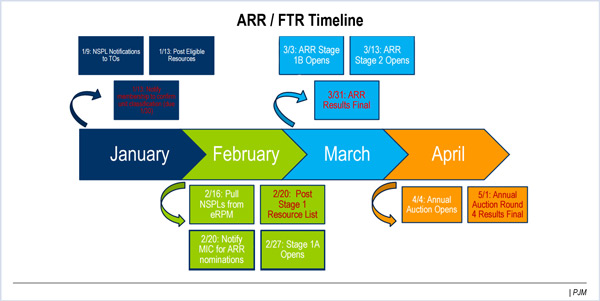By Rory D. Sweeney
FERC last week rejected rehearing requests over revisions to PJM’s financial transmission rights market, ruling in time for the RTO to implement the changes in its 2017 auction revenue rights allocation (EL16-6).
The commission’s Jan. 31 order upheld its Sept. 15 ruling that modeling assumptions PJM adopted to address FTR revenue inadequacy had resulted in unwarranted cost shifts between ARR holders and FTR holders. FERC also accepted PJM’s compliance filing in response to the commission’s requirement that it develop a method for allocating ARRs that doesn’t consider extinct generators. (See FERC Finds PJM ARR/FTR Market Design Flawed; Rejects Proposed Fix.)
Under the new rules, PJM will assign balancing congestion to real-time load and exports and regularly update its ARR allocations to reflect generator retirements. (See “Generators Displeased with FTR Adjustments,” PJM Market Implementation Committee Briefs.)
A variety of stakeholders, including the Independent Market Monitor, New Jersey and Delaware regulators, load-serving entities and the PJM Industrial Customer Coalition, had asked the commission to revisit the Sept. 15 order.
The requests focused on four points: netting the values of both positive and negative FTRs into a single portfolio for the FTR holder; allocation of balancing congestion; ARR Stage 1A overallocation; and PJM’s proposed 1.5% zonal load-forecast growth-rate adder to prevent infeasible ARRs.
On all four, FERC maintained its previous stance.
The commission rejected arguments that FTRs are meant to benefit only load. “FTRs were designed to serve as the financial equivalent of firm transmission service and play a key role in ensuring open access to firm transmission service by providing a congestion hedging function,” the commission said. “The purpose of FTRs to serve as a congestion hedge has been well established. … On the issue of cost causation, the commission found that while balancing congestion is currently allocated to FTR holders, FTR holders do not cause and cannot predict the level of balancing congestion.”
While the commission accepted PJM’s compliance filing, it rejected the RTO’s proposal to allocate any FTR overfunding surplus to ARR holders. FERC gave PJM 30 days to submit a compliance filing removing it.
“There was no finding in the Sept. 15 order that the current design with respect to surplus allocation is unjust and unreasonable, and there is no evidence that the changes required in the Sept. 15 order result in the current allocation of surplus funds as being unjust and unreasonable. Therefore, we find this aspect of PJM’s proposal as out of scope, without prejudice, and refer consideration of such changes to PJM’s stakeholder process,” the order said.
FERC accepted PJM’s requested effective dates, making replacement of historical source points for ARR allocations effective Feb. 1 and the Tariff provisions addressing PJM’s balancing congestion charge allocation effective June 1.



